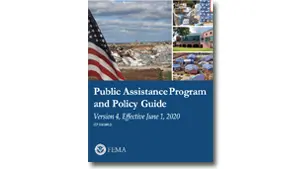 Public Assistance begins with the Disaster Declaration Process.
Public Assistance begins with the Disaster Declaration Process.
When an area has received a Presidential declaration of an emergency or major disaster, then its state, tribal, territorial and local governments — and certain types of private non-profits — may be eligible to apply for Public Assistance (PA).
Eligibility for Public Assistance Grant Funding
The four basic components of PA eligibility are applicant, facility, work and cost.
- An applicant must be a state, territory, tribe, local government, or certain type of private nonprofit organization.
- A facility must be a building, public works system, equipment, or improved and maintained natural feature.
- Work is categorized as either “emergency” or “permanent.” It must be required as a result of the declared incident, located within the designated disaster area, and is the legal responsibility of the eligible Applicant.
- Costs are expenses tied directly to eligible work, and must be adequately documented, authorized, necessary and reasonable. Eligible costs include labor, equipment, materials, contract work, and management costs.
The federal share of assistance is not less than 75 percent of the eligible cost. The Recipient determines how the non-federal share (up to 25 percent) is split with eligible Applicants.
Eligible Types of Work
Emergency Work — Must Be Completed Within Six Months
- Category A: Debris removal
- Category B: Emergency protective measures
Permanent Work — Must Be Completed Within 18 Months
- Category C: Roads and bridges
- Category D: Water control facilities
- Category E: Public buildings and equipment
- Category F: Public utilities
- Category G: Parks, recreational, and other facilities
Click here to view the resource.




